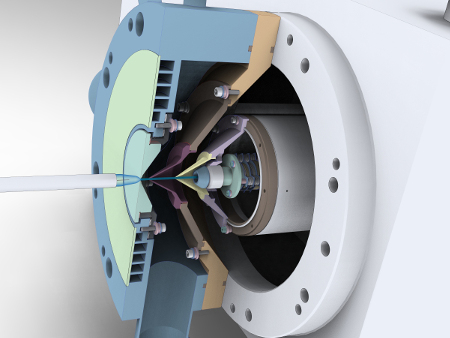Plasma Catalysis

For further information and pricing, please get in touch with us.
Plasma catalysis describes what occurs when a plasma discharge is coupled with a compound containing catalytic properties.
Predominantly, this process is a gas-phase reaction conducted with a non-thermal plasma and a solid catalyst.
Related Products
Plasma catalysis is increasingly at the forefront of research and development (R&D) into novel gas conversions like the transition of methane (CH4) into oxygenates or carbon dioxide (CO2) into value-added chemicals.
Hiden Analytical supplies a range of mass and energy analyzers suitable for non-thermal plasma (NTP) experimentation, particularly in the field of plasma catalysis.
Gas Conversion Applications
Plasma catalysis is being utilized in an ever-growing scope of gas-transforming applications to rejuvenate less valuable chemical compounds. It reduces the overall amount of undesirable material which, if not treated, becomes waste matter. The conversion of CO2 into cleaner, greener more beneficial elements through plasma catalysis provides an environmentally sensitive solution for industries around the world.
Manipulation of nitrogen (N2) through fixation supports the synthesis of more cooperative compounds such as ammonia (NH3) and the resultant catalytic conversion into pure, pollution-free hydrocarbons and oxygenates.
Plasma Catalysis with Hiden Analytical
Plasma catalysis can culminate in superior gas conversion rates, reactions, and results with far-reaching industrial benefits. At Hiden Analytical, we support professionals in all areas of plasma research with a suite of specialized mass spectrometry systems suitable for carrying out plasma diagnostics and advanced catalyst characterizations. To learn more about the products that we supply for plasma catalysis studies, simply contact us today.
Flyers
Posters
A TPD-MS Study of Novel Hydrogen Storage Materials
Application of Pd Catalysts for the Hydrogenation of Nitriles
Cathode Catalyst Degradation in PEM Fuel Cells
Gas Phase Hydrogenation of 1,3-Pentadine, an FTIR Study
New Mesoporous Silica Supported Nickel Catalysts for Biomass Conversion
Plasma Modification of Catalysts Using a Dielectric Barrier Discharge
Plasma Modified Nickel Catalysts for Biomass Conversion
Reaction of Steam and Methane over Novel YSZ-LaB6 Composities and Nickel-YSZ Cermets
Synthesis of CeO2–MnOx Mixed Oxides and Catalytic Performance under Oxygen-Rich Condition 257.04 KB 31 downloads
Synthesis of CeO2–MnOx mixed oxides and catalytic performance under oxygen-rich...Structure–Activity Relations in Cs-Doped Heteropolyacid Catalysts for Biodiesel Production 497.64 KB 40 downloads
Structure–activity relations in Cs-doped heteropolyacid catalysts for biodiesel...Structures and Properties of Zirconia-Supported Ruthenium Oxide Catalysts for the... 121.52 KB 27 downloads
Structures and Properties of Zirconia-Supported Ruthenium Oxide Catalysts for the...Structural and Thermal Study of Carbon-Modified Molybdenum Sub-Oxide Catalysts 689.67 KB 16 downloads
Structural and thermal study of carbon-modified molybdenum sub-oxide catalysts. ...Soft Ionisation Analysis of Evolved Gas for Oxidative Decomposition of an Epoxy Resin... 243.91 KB 39 downloads
Soft ionisation analysis of evolved gas for oxidative decomposition of an epoxy resin/carbon...Single-Crystalline La0.6Sr0.4CoO3-d Nanowires/Nanorods Derived Hydrothermally Without the... 496.80 KB 28 downloads
Single-Crystalline La0.6Sr0.4CoO3-d Nanowires/Nanorods Derived Hydrothermally Without...Selective Poisoning of Active Centers of Sulfated Zirconia Monitored by TAP, XPS, and DRIFTS 369.25 KB 32 downloads
Selective poisoning of active centers of sulfated zirconia monitored by TAP, XPS,...Selective Catalytic Oxidation of Ammonia from MAP Decomposition 875.42 KB 21 downloads
Selective catalytic oxidation of ammonia from MAP decomposition. ...Re-Investigating the CO Oxidation Mechanism over Unsupported MnO, Mn2O3 and MnO2 Catalysts 446.87 KB 27 downloads
Re-investigating the CO oxidation mechanism over unsupported MnO, Mn2O3 and MnO2...Quantification of Brønsted Acid Sites in Microporous Catalysts by a Combined FTIR and NH3 491.84 KB 23 downloads
Quantification of Brønsted Acid Sites in Microporous Catalysts by a Combined FTIR...

